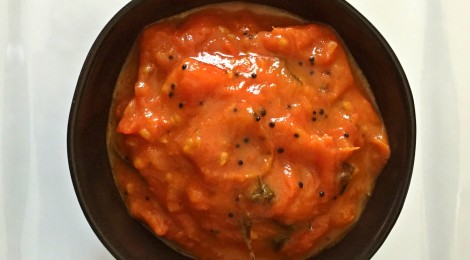
The Best Tomato Chutney Ever: South Indian “Tomato Gojju”
This is what happened. When I placed my grocery order last week, I goofed. Instead of selecting “4 plum tomatoes” somehow, I unwittingly chose 4 bags of tomatoes instead; I opened the box and pulled out 6 pounds of plum tomatoes! Oh. Ok, now what to do? My mom Geetha suggested thinly slicing and oven-roasting them. Then, my husband Sean suggested making a big batch of mom’s homemade South Indian tomato chutney called tomato gojju. Sold!
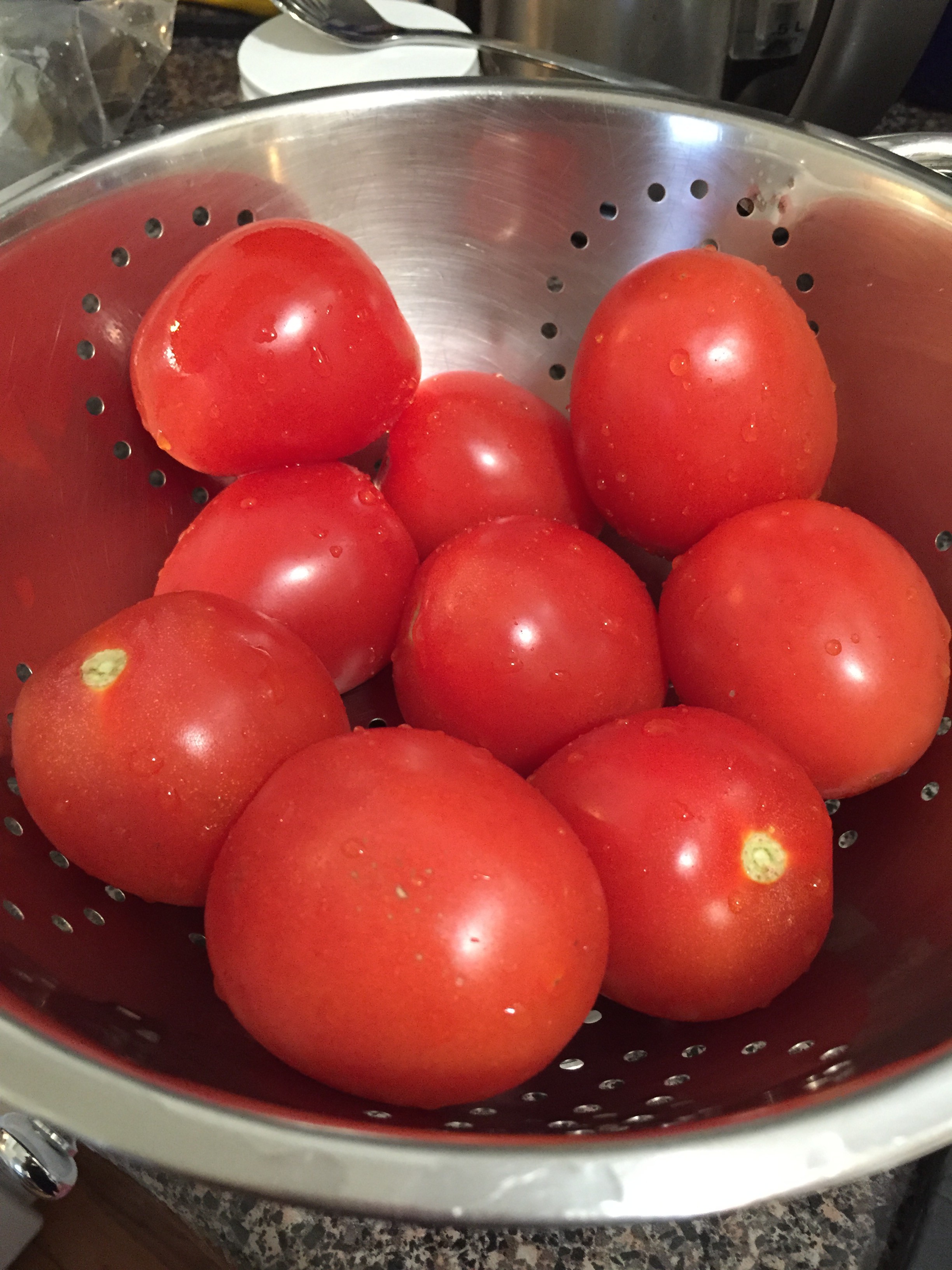
Summer in a bowl
Ok, let’s talk about chutney. Next to ‘curry‘ it’s probably the most commonly associated word with all things Indian, not just with Indian cuisine. According to Wikipedia, chutney is “a family of condiments associated with South Asian cuisine made from a highly variable mixture of spices, vegetables, or fruit.” Nearly every cuisine in the world has its own unique condiments of jams, jellies, preserves, chutneys, and pickles, from Korea’s kimchi of fermented cabbage and red chilli to Britain’s ‘Major Grey Chutney’ that combines mango, raisins, vinegar, lime, onion, tamarind and spices. As you can imagine, Indian cuisine has a great variety of jams, jellies, preserves, chutneys and pickles, which spread around the globe. The combinations and permutations are endless and recipes can differ by family, never mind by state! Whether it’s called a side dish or a condiment, chutney can transform a dish by adding dimensions of flavors of sweetness, vinegar, and heat.
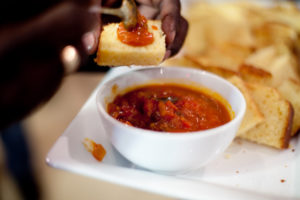
There are a variety of ways to eat chutney. Here is cornbread with tomato chutney by Chef Marcus Samuelsson of Red Rooster here in Harlem. (Photo credit: starchefs.com)
So, what exactly is a “gojju” in the world of chutney? In South India, fresh fruit or vegetables are sautéed in a skillet with a little vegetable oil and tempered spices like black mustard seeds and fresh kari patha leaves (curry leaves). To this are added ground spices, salt, and palm sugar, and it simmers on low until it’s thick and glossy. This dish will definitely require a trip to your local Indian grocer; among other things, it calls for a South Indian ground spice blend called ‘rasam powder’ that includes turmeric, black peppercorn, and roasted lentils. Like me, most South Indians enjoy tomato gojju with plain steamed rice, which is the perfect canvas for the complex flavors of this dish — imagine something that is simultaneously sweet, spicy, pungent, and tart, and underscored by a pleasant smokiness. Despite my adoration for all tomato dishes, from an Italian marinara to Mexican salsa, my most favorite tomato dish in the world is my mom’s South Indian tomato gojju. You can eat it as a side dish with rice like me, or you can use it as a condiment for anything from grilled chicken to scrambled eggs. Here is the recipe, from my kitchen to yours.
The Best Tomato Chutney Ever: South Indian “Tomato Gojju”
Serves 6
Ingredients
- 2 tablespoons vegetable oil
- 2 teaspoons black mustard seeds
- 15-20 fresh kari patha leaves (also known as curry leaves)
- 1 teaspoon asafetida (also known as hing)
- 3 lbs ripe tomatoes, chopped
- 1 teaspoon rasam powder (also known as saaru pudi, an aromatic blend of roasted lentils, turmeric, black peppercorn, and other spices)
- 1 teaspoon jaggery (this is palm sugar; you can also use dark brown sugar)
- 1 teaspoon salt
Preparation
- In a large non-stick skillet add oil and mustard seeds. Turn flame to medium and close skillet with tightly-fitted lid. After 5 minutes you will begin to hear the mustard seeds popping and sputtering (this sounds like little bits of popcorn popping).
- As soon as the popping stops, remove the lid, move the skillet to the side and add the kari patha leaves and asafetida, swirling them around with a wooden spoon (the leaves will shrivel almost immediately). Return to heat for 30 seconds and add tomatoes, rasam powder, sugar, and salt. Mix well to combine.
- Increase heat and bring to a boil. Reduce to a simmer and stir frequently for 40 minutes.
- Let cool a few minutes and serve immediately over steamed white rice with a side of plain yogurt or raita.

These tomatoes I used were nice and firm (because I had so many of them), but this recipe is great when you have over ripened tomatoes and need to use them before they go bad
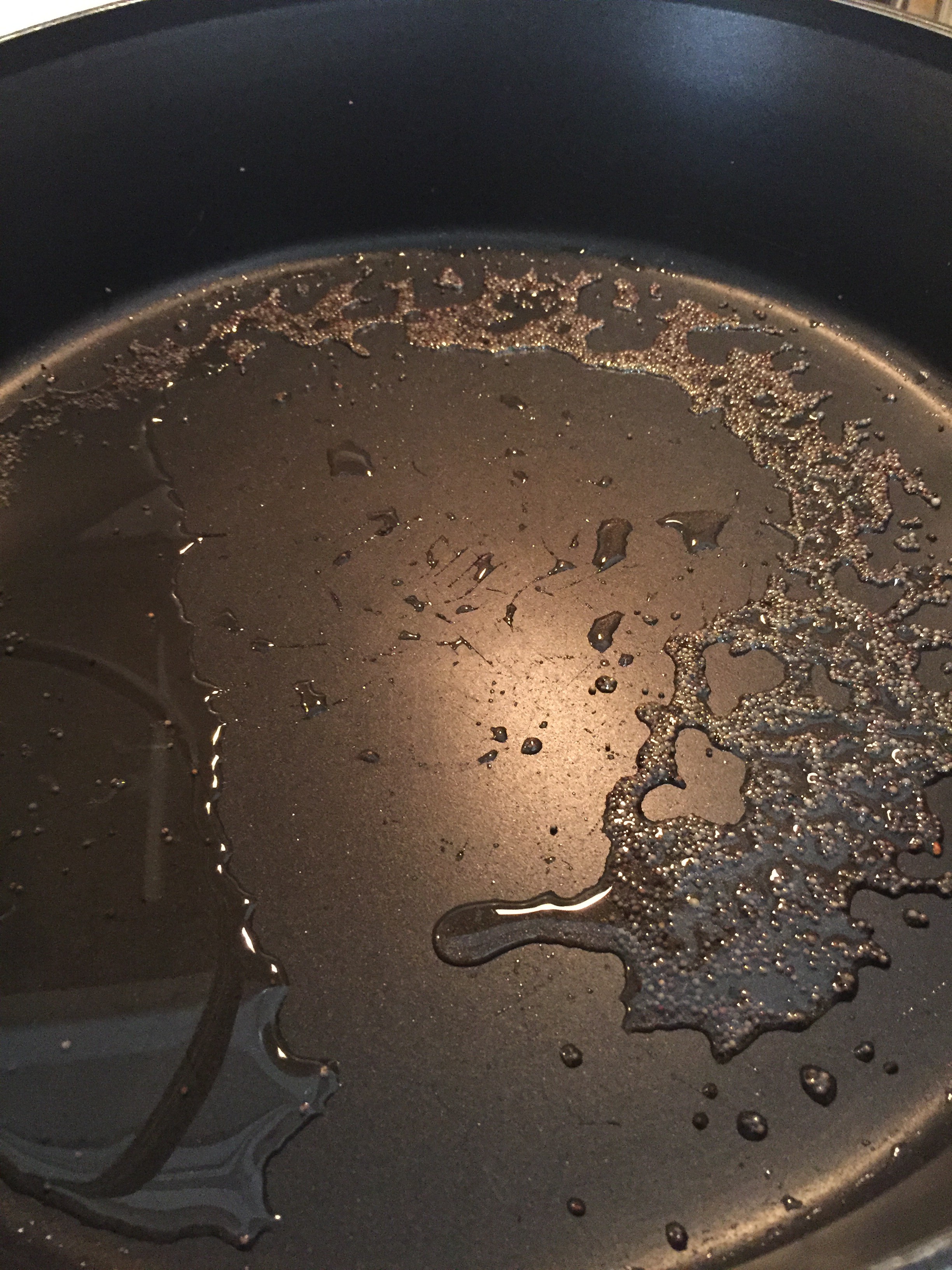
A hallmark of South Indian cooking: tempering spices in hot oil or over a flame; in this case, black mustard seeds are heated with vegetable oil until they begin popping lightly, which releases the flavors and aromas, after which additional whole and ground spices are added to make this tomato chutney
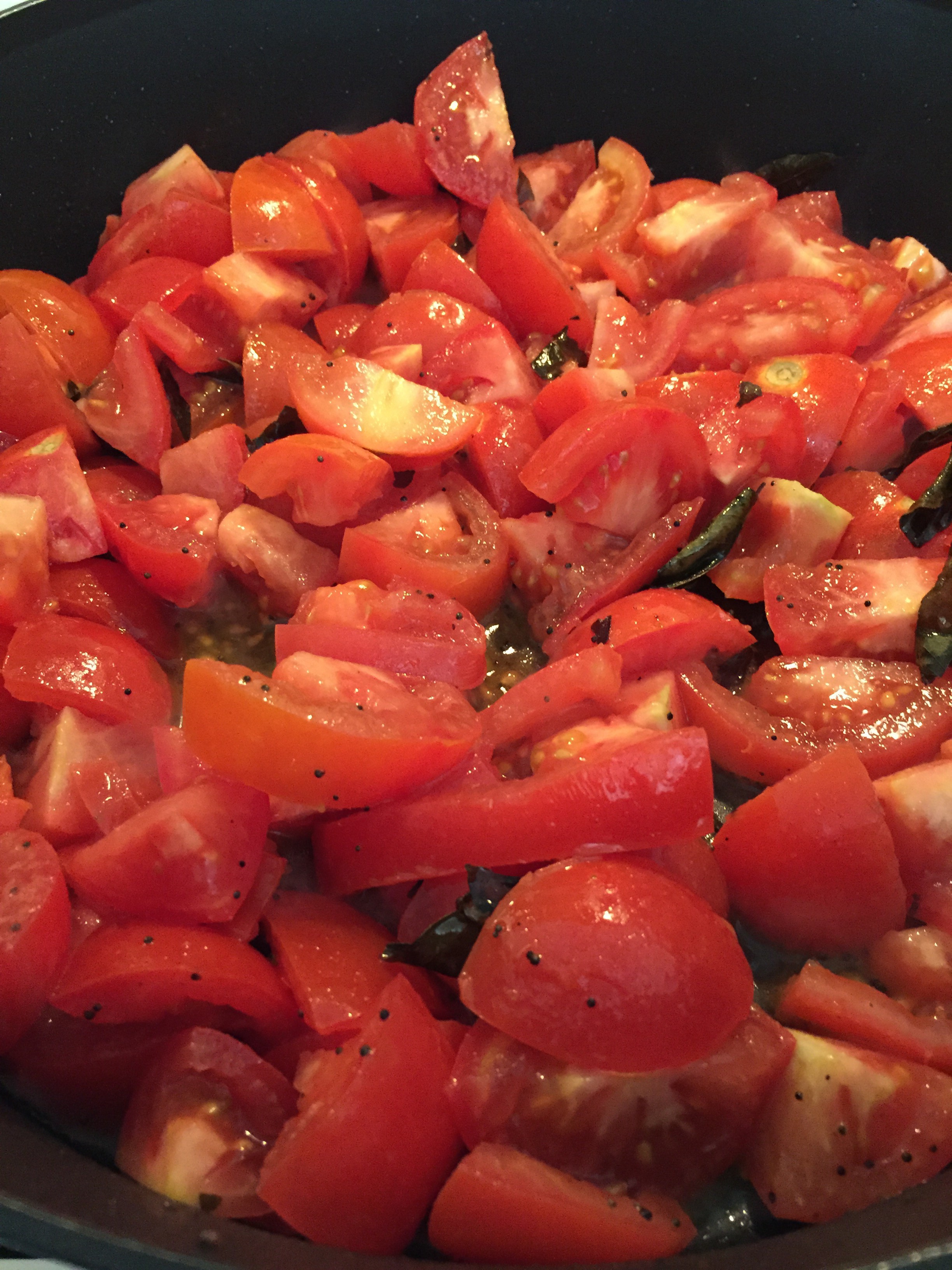
Don’t worry spending a lot of time to finely chop the tomatoes, it’s not necessary. Cutting them into large chunks like this is fine, they will cook down over the course of 40 minutes on a low simmer.
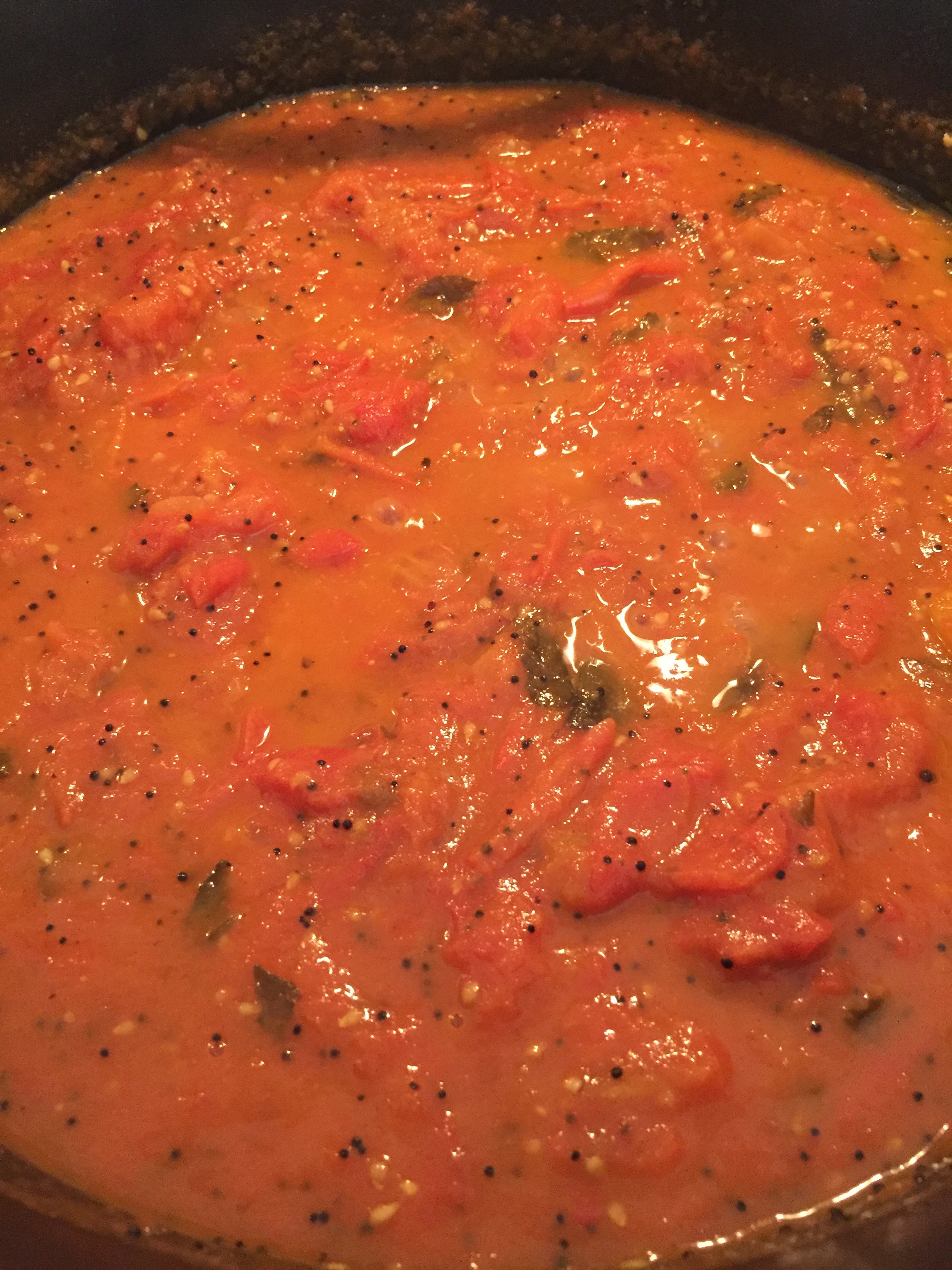
This is how it should look after about 20 minutes
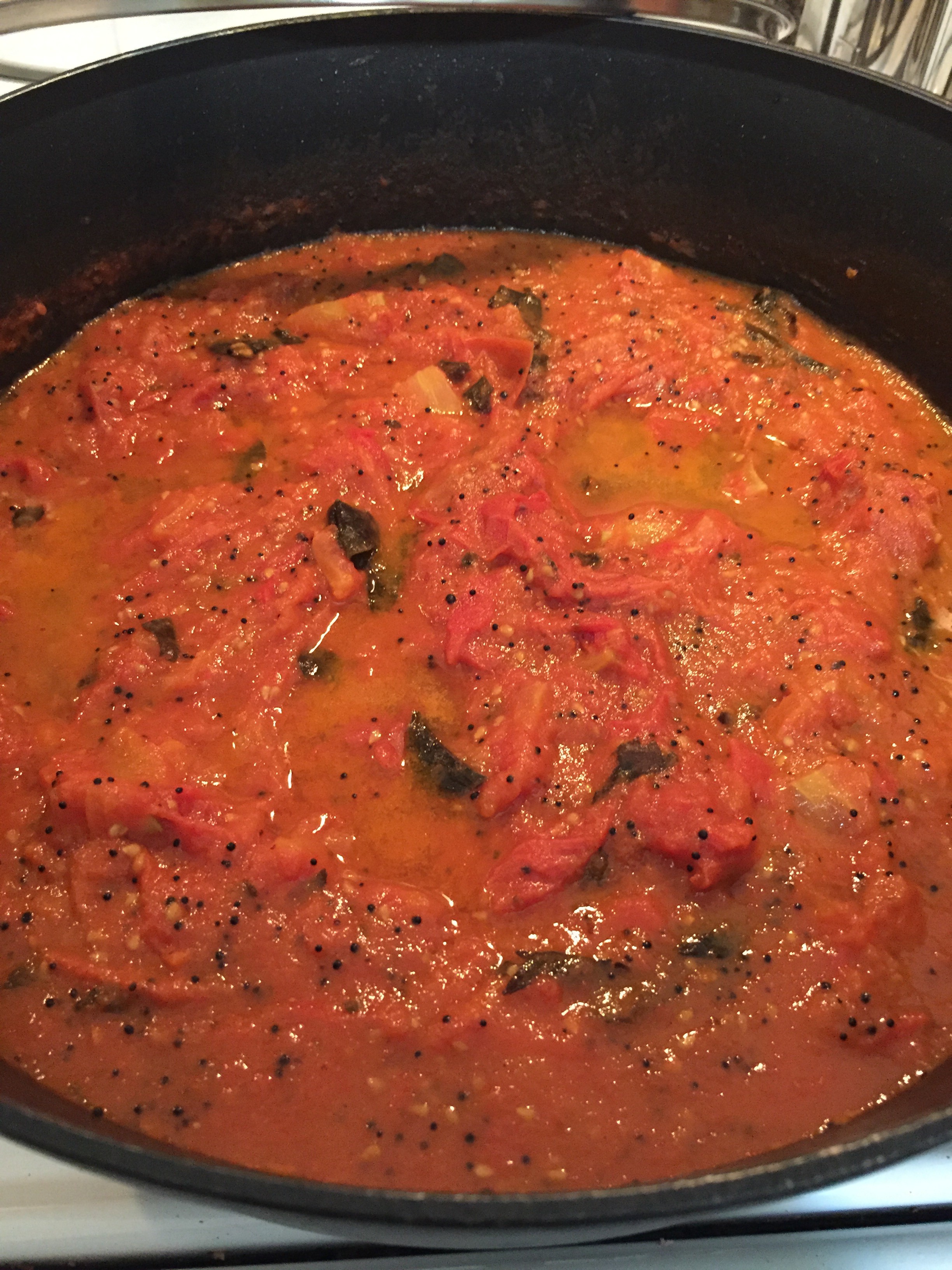
This is how it should look after 40 minutes
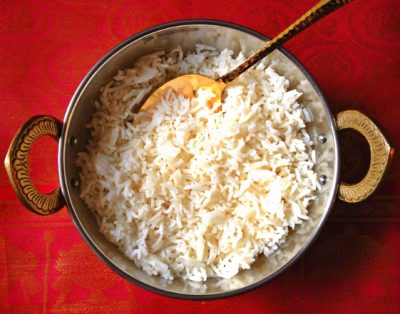


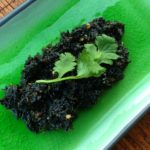



Thanks For Sharing this amazing recipe. My family loved it. I will be sharing this recipe with my friends. Hope the will like it.